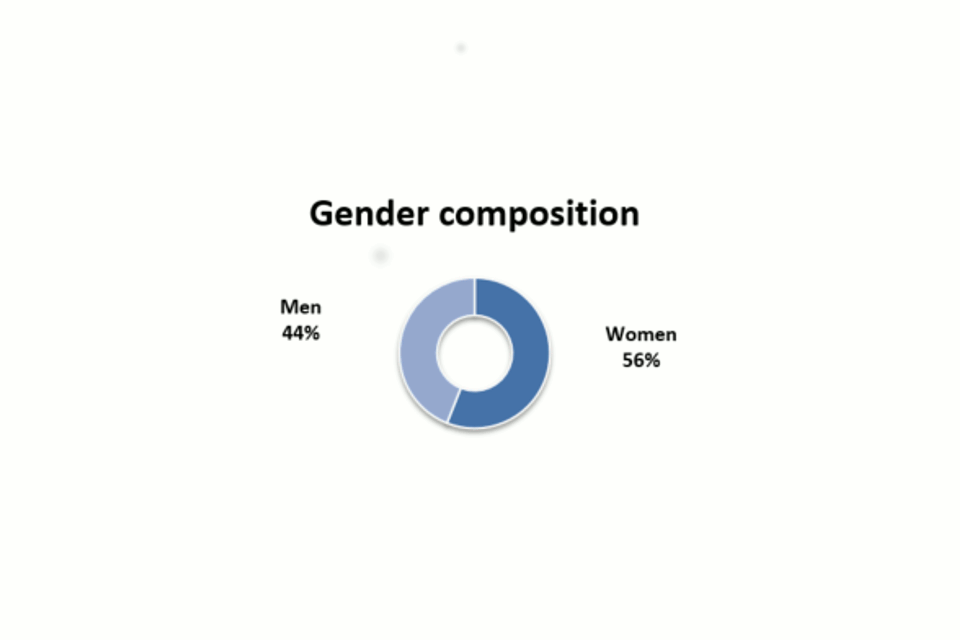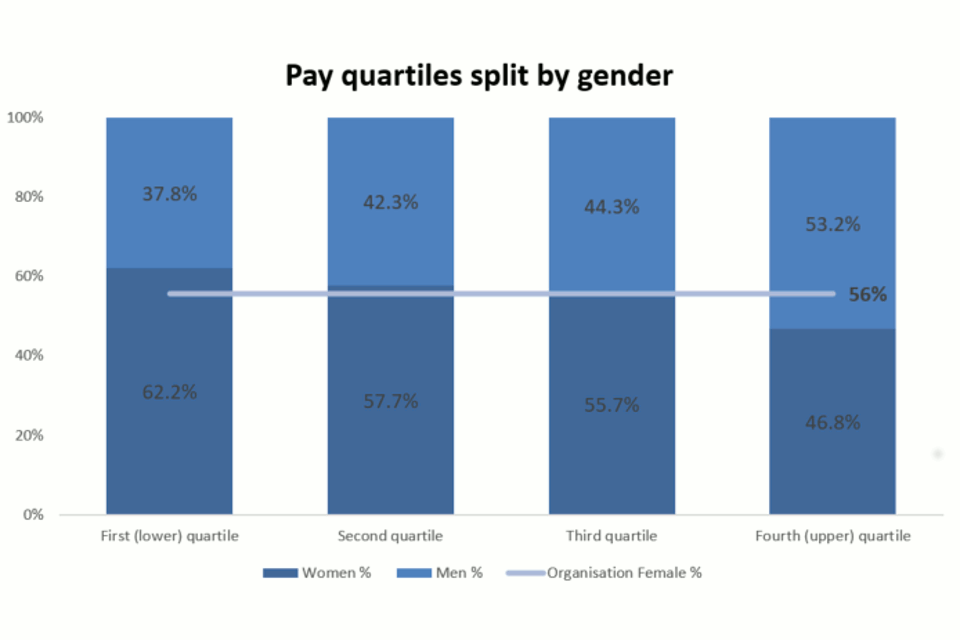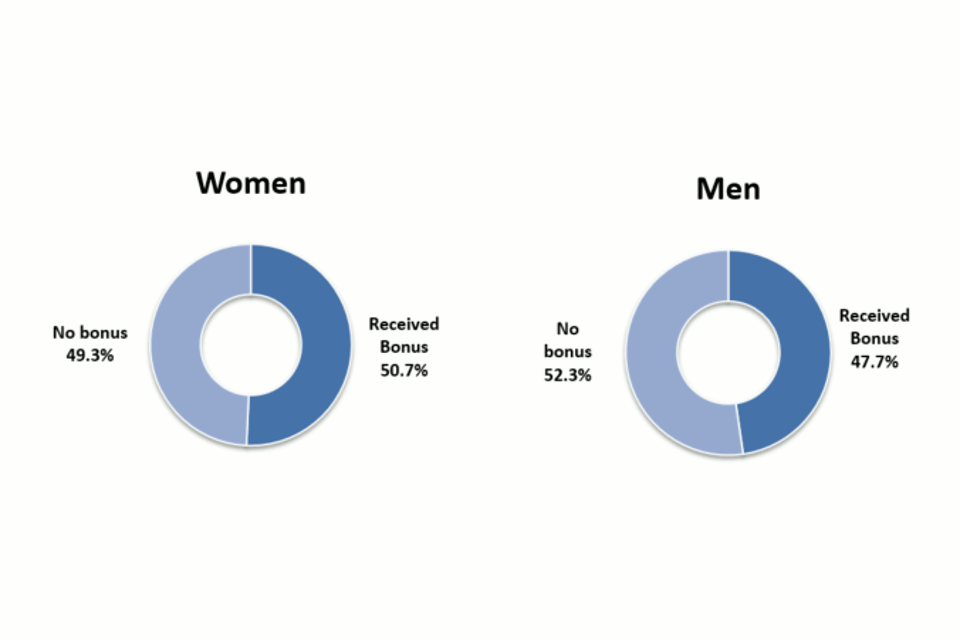DFID’s gender pay gap report 2016-17
Updated 18 December 2017
Introduction
The Department for International Development (DFID) leads the UK’s work to end extreme poverty, building a safer, healthier, more prosperous world for all of us which is firmly in the UK’s national interest. We’re ending the need for aid by creating jobs, unlocking the potential of girls and women and helping to save lives when humanitarian emergencies hit.
DFID has over 3000 staff with head offices in London and East Kilbride (near Glasgow) and substantial teams in more than 30 countries across Africa, Asia and the Middle East. Our pay approach is designed to support the fair treatment and reward all our staff. We are committed to being an inclusive employer by offering opportunities that will help staff realise their full potential and recognise their contribution to DFID, and the wider UK Government’s, ambitions.
Earlier this year, the Government introduced world-leading legislation that made it statutory for organisations with 250 or more employees to report annually on their gender pay gap. Government departments are covered by the Equality Act 2010 (Specific Duties and Public Authorities) Regulations 2017 which came into force on 31 March 2017. These regulations underpin the Public Sector Equality Duty and require the relevant organisations to publish their gender pay gap data by 30 March 2018 (and then annually), including mean and median gender pay gaps; the mean and median gender bonus gaps; the proportion of men and women who received bonuses; and the proportions of male and female employees in each pay quartile.
The gender pay gap shows the difference in the average pay between all men and women in a workforce. If a workforce has a particularly high gender pay gap, this can indicate there may be a number of issues to deal with, and the individual calculations may help to identify what those issues are.
Under Gender Pay Gap reporting, we are required to report on the difference between men and women who work in DFID in relation to:
- mean hourly rate of pay
- median hourly rate of pay
- mean bonus paid
- median bonus paid
The proportions of:
- men and women who were paid a bonus
- men and women in the 1st (lower), quartile, 2nd, 3rd, and 4th (upper) quartile pay bands
Definitions
The Regulations require information to be reported under the following definitions.
The mean average is calculated by adding together all the values and dividing by the number of values. In this case a mean average is calculated for men, a mean average is calculated for women, and the two mean averages are compared.
The median average is calculated by sorting the values into an order from lowest to highest, and then finding the value that is in the middle of that sorted list. In this case a median average is calculated for men, a median average is calculated for women, and the two median averages are compared.
The pay quartiles are hourly pay for all staff are sorted into order from lowest amount to highest amount. This ordered list is then split into four equal parts, known as quartiles. The lowest pay quartile contains the first quarter of the ordered list, i.e. the 25% of the list with the lowest hourly rates of pay. The upper quartile contains the 25% of staff whose hourly rates of pay are the highest. Quartiles are related to the median average, as the median average marks the point between the second and third quartile.
Statement
DFID confirms that our data has been calculated according to the requirements of the Equality Act 2010 (Specific Duties and Public Authorities Regulations 2017).
DFID data does not include contractors or consultants who provide services to DFID and are defined under the gender pay gap definition as being in scope for reporting purposes. This is due to the information not currently being held in a format that would allow the data to be reported for gender pay purposes. Locally engaged staff who are contracted outside of the UK are also not included as they are defined as not in scope for the purposes of gender pay.
Pay data used for this report is based on employee pay on the snapshot date of 31 March 2017 (including bonuses paid at 31 March 2017) and bonus pay for the period 1 April 2016 to 31 March 2017.
Gender pay gap and bonus pay
Explaining our gender pay gap
Due to the nature of DFID’s work, a relatively high proportion of roles are in more senior managerial roles (A1 – A2L). There are more men at A1 and more women at the more junior grades (B1 – C2). In addition, a larger number of more junior roles are based outside London and are paid at the national rate which is lower than the London rate. This is the key factor underlying DFID’s overall mean pay gap of 8.5%. The breakdown of the pay gap by grade below shows that the pay gap is much lower within individual grades.
The pay gap for the SCS is close to the overall mean reflecting the fact that this group covers four pay bands (SCS 1 – 4) and that there were proportionately more men at the higher bands. DFID is, however, moving towards a more equal gender balance across all SCS grades and currently has three women and one man at the second highest grade within the SCS (SCS Pay band 3).
Profile of the workforce
DFID employed an average of 2,985 individuals in 2016/17. This report includes data for 2,250 staff as required by the Equality Act 2010. It does not include data for locally employed staff overseas, contractors or consultants.
In 2016/17 women made up 56% of DFID’s workforce. This is a slightly higher proportion than the wider Civil Service figure of 53% women. [footnote 1]

DFID gender composition
Overall this is reflected in our pay quartiles which shows a greater proportion of women in the lower quartile (62.2%) than in the higher quartile (46.8%).
Grade breakdown[footnote 2]
| Grade | Number of Men | % of total Men | Men at grade | Number of Women | % of total Women | Women at grade | Mean Pay Gap |
|---|---|---|---|---|---|---|---|
| SCS | 46 | 5% | 53% | 41 | 3% | 47% | 8.6% |
| A1 | 234 | 25% | 52% | 213 | 18% | 48% | 3.5% |
| A2 | 324 | 35% | 46% | 420 | 35% | 56% | 3.3% |
| A2L | 96 | 10% | 42% | 132 | 11% | 58% | 0.7% |
| B1 | 132 | 14% | 40% | 196 | 16% | 60% | 2.9% |
| B2 | 71 | 8% | 37% | 144 | 12% | 67% | 2.5% |
| C1 | 32 | 3% | 43% | 43 | 4% | 57% | -0.7% |
Basic Pay
The difference in hourly pay at 31 March 2017 between men and women is shown below.
Mean = 8.5%, Median = 6.8%
The mean average hourly pay for men in DFID is 8.5% higher than the mean average hourly pay for women. The median average hourly pay for men is also higher, with men’s median hourly pay being 6.8% higher than the median average hourly pay for women.
Pay Quartiles
Just over 62% of workers in the lowest pay quartile were women, compared with near to 47% of employees in the top pay quartile. As shown in the grade breakdown table there are fewer women in the highest grades (SCS and A1) which is reflected in the gender spilt in the pay quartiles.

DFID pay quartiles split by gender
Bonus Pay
The difference in bonus pay between men and women for the period from 1 April 2016 to 31 March 2017 is shown below.
Mean = 6.9%, Median = 0%
DFID has a mean bonus pay gap of 6.9% and there is no gap in the median bonus pay for men and women in the organisation. At SCS level the mean bonus was higher for women than men.
Percentage of bonuses paid
In the period from 1 April 2016 to 31 March 2017, 50.7% of women received a bonus payment.

DFID percentage of bonus paid
In the same period, 47.7% of men received a bonus payment. Women received more bonuses than men throughout the grades.
Closing the gender pay gap
DFID is committed to closing the gender pay gap and being proactive in creating a level playing field and increasing opportunities for women across the whole of the organisation. The gender pay gap data is a snapshot taken at 31 March each year which provides us with valuable data and will allow us to build a yearly picture of the progress we are making.
Closing the gender pay gap is an integral part of our Diversity and Inclusion strategy which will be published early 2018. As our pay gap is largely a result of having proportionately more men than women at senior grades, the most effective way of closing the gender pay gap is to work to increase the numbers of women at higher grades within DFID. The key elements of how we address this are:
Recruitment
We aim to recruit a talented and diverse workforce which reflects the society we serve. When advertising roles, we ensure that gender neutral language is used and anonymous recruitment is in operation for grades A1 and below to ensure a fair recruitment strategy.
We also have an existing policy of no single-sex interview panels at all grades, unless by exception, as well as promoting diverse panels at all grades.
All employees, including line managers, are required to undertake, and regularly refresh, unconscious bias training to allow them to be aware of the unconscious thoughts that may influence and lead to unfair decisions.
Progression
DFID already seen positive progression in more women taking up senior roles across, and especially in SCS grades; 47% of our SCS are women, up from 31% 9 years ago, and 55.6% of our SCS Heads of Overseas Office are now women (15 out of 27). Our current SCS Pay Band 3 (Director General) roles have three of four posts filled by women (one on a temporary basis).
DFID continues to work to remove barriers to career progression for all talented staff under-represented in our senior grades by encouraging participation in Civil Service Talent Programmes such as the Positive Action Pathway and Future Leaders Scheme for staff at grade A1 and below, and the Senior Leaders Scheme which is open to those at SCS Pay Band 1. These are development programmes for employees to build the skills and experience to progress in their careers and move into senior roles.
Mentoring and coaching is available to all staff through the matching service provided by Civil Service Learning, allowing staff to personalise their development to their own level and speed of progression as required.
Career Paths
In addition to development programmes for existing employees, DFID also offers apprenticeships and internships to provide access to opportunities, stretch and networks for individuals to reach their potential.
DFID staff within the UK have access to flexible working arrangements, supporting work-life balance. Most overseas offices also offer some flexible working. This offers all our staff opportunities to progress their careers while providing them with personal flexibility.
Our Global Diversity and Inclusion Strategy shows the comprehensive programme which we have in place within DFID and our future strategy will be published in the new year.
Pay Policy
During the final quarter of 2016/17, DFID introduced an in-year award scheme. The analysis of a pilot of this scheme showed proportionate diversity outcomes for our men and women; awards were proportionally distributed across all employee groups within the organisation. We will develop this approach in line with our performance management processes to minimise biases and ensure equality.
In the next three years we will consider mechanisms for progression to enable us to manage pay disparities highlighted.
Women’s Network
Staff networks continue to play a vital role in delivering workplace inclusion for all our employees. The value of the networks is recognised in DFID and we encourage those who play key roles in networks to include this as part of their performance objectives. The women’s network’s overall objective is to support and inspire women at all levels in DFID to achieve their potential. Its work focuses on a number of activities, such as:
- inspiring women - through events, external speakers, workshops and seminars
- building confidence - through networking, mentoring and learning from others
- empowering women - overcoming barriers to success and engaging on key issues that affect them
Additional information
Clarification of Grades
DFID uses the Civil Service grade structure using the following names:
- A1 – Grade 6
- A2 – Grade 7
- A2L – Senior Executive Officer
- B1 – Higher Executive Officer
- B2 – Executive Officer
- C1/C2 – Admin Officer
Regulations
For further information on the Gender Pay Gap including definitions of in-scope employees, please consult the statutory regulations: The Equality Act 2010 (Gender Pay Gap Information) Regulations 2017.
-
ONS Civil Service Workforce Data Report; 2017. The ONS report has different definitions for which employees are in scope. ↩
-
This table does not contain information about C2 grade or any talent programmes run by DFID due to small numbers of individuals. Only individuals who are in scope for gender pay gap reporting are included in this table. Figures may not match other reports where different employee groups have been used. ↩
